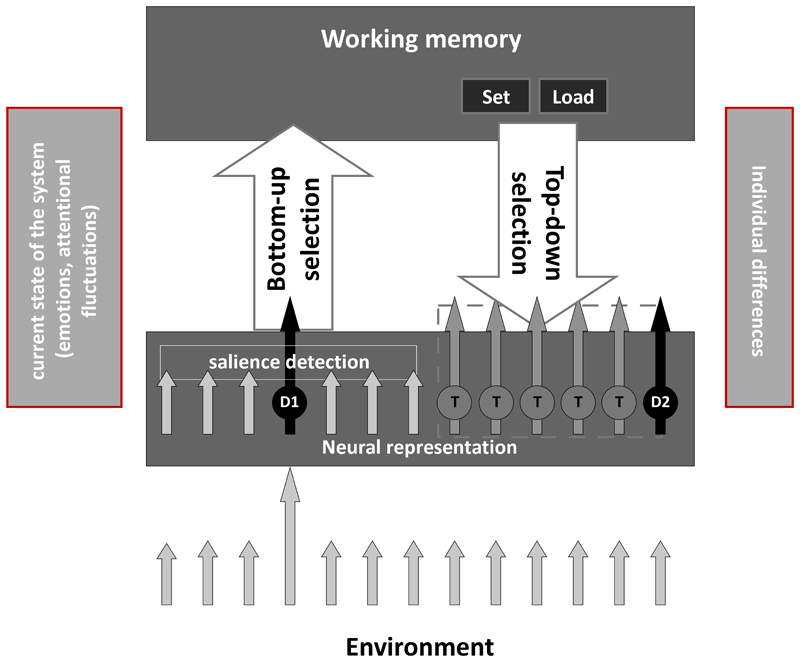Figure 4.
Schematic illustration of the attentional processes that contribute to the elaboration of nociceptive stimuli. Priority access to working memory is gained depending on top-down selection (dependent on intentional control) and bottom-up selection (triggered by involuntary capture of attention). The intentional selection of the stimuli is made based on the relevance of cognitive goals (i.e. it depends on the possibility that stimuli are targets [T] of the task). Stimuli that are not goal-relevant (i.e. that are distractors [D]) can enter into the spot of attention, if they are salient enough to capture attention involuntarily (D1) or if they share some features with the targets (D2). For a thorough description of the model please refer to (Legrain & Torta, 2015; Legrain, Van Damme, Eccleston, Davis, Seminowicz, & Crombez, 2009). In an update of this model, we suggest that other factors can influence the balance between top-down and bottom-up processes (see left and right boxes). For instance the balance between top-down and bottom-up selection can be shaped by the emotional status of the person (e.g. (Sussman, Szekely, Hajcak, & Mohanty, 2016; Vanlessen, Rossi, De Raedt, & Pourtois, 2014), and by spontaneous fluctuations of attention (Kucyi, Salomons, & Davis, 2013). Anxious individuals for instance might find it problematic to focus on an alternative goal and be more susceptible to being attracted by bottom-up distracters. In contrast, spontaneous ‘mind wandering’ away from the stimuli might contribute to reduce the bottom-up distraction of the stimuli even independently from a concomitant non-pain related goal. Individual differences in terms of personality traits and cognitive abilities may also contribute to a flexible (or non-flexible) balancing between the two systems. It remains to be elucidated how much these characteristics are unchangeable by the experience or can be trained.

